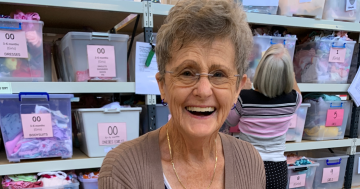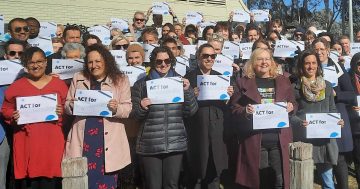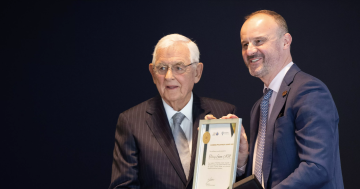
Canberra’s prosperous facade obscures us from seeing many in the community doing it tough. Photo: File.
Locals know that beneath the capital’s shiny exterior, many Canberrans are doing it tough, but even many locals are unaware of the level of crisis faced by some in our community. To make matters worse, many community service organisations that ensure people in need are fed, have enough warm clothes, and stay safe are at real risk of downsizing or collapse.
Most people go through at least one tough patch, and the support from community service organisations makes a genuine difference in their life’s journey. Community organisations provide services for children, older people, those facing mental health or alcohol and other drug issues, survivors of domestic and family violence, people with ill health, people with a disability, carers and volunteers.
When people experience a crisis, their lives can often go two ways. With the proper support, most people can get through with their dreams and futures intact. Without support, they may be knocked from their life path and permanently reduce their happiness and capacity to contribute to the community. It can lead to mental ill-health and a downward spiral, which only worsens the situation.
One of the community sector’s greatest strengths is to help people at these critical junctures. Doing so creates a community of more fulfilled, happier, more productive people. In economic terms, these interventions provide a remarkable return on investment.
Following the pandemic and amidst cost-of-living and housing crises, the community sector has never been more stretched, and its work has never been more important. The needs of the average person seeking help have become more complex as they experience pressures from many directions. The community sector has risen to the occasion, even as philanthropy and volunteering have declined and with chronic underfunding from government.
The community sector is motivated not by profit or power but to help people. The sector has done its best to continue to deliver services as though it were not in crisis, working unpaid hours and draining organisations’ modest financial reserves. After a long stormy period, many organisations have exhausted their last rainy-day funds.
The community is starting to lose out on vital programs, such as a specialised gym frequented by older people and those with disabilities, and aquatherapy classes for people with debilitating arthritis. Both services are essential to their clients and help reduce the pressure on the health system and other community sector organisations, saving money in the process.
Private discussions with the CEOs of community sector organisations reveal that this is just the tip of the iceberg, with several well-known organisations facing significant contraction or closure in the next year without intervention. Many organisations are also being forced to ration their services, turning people away or providing support for shorter periods of time than people need.
The real risk is that this creates a downward spiral for the whole community. As some community organisations shut down programs or close, it adds more pressure to the community, families and individuals that have to take up the load. Loss of services may force remaining organisations to focus more on clients in crisis rather than providing the preventative and supportive work that keeps people out of crisis in the first place.
Fundamentally, the sector requires more and more sustainable support from government. In the past, the government has benefited from higher levels of philanthropy and volunteering. As they decline, it is time for government to step in to fill the gaps and contribute to a more sustainable community sector that Canberrans deserve.
Devin Bowles is the CEO of ACTCOSS.
This is the first in a series of articles showcasing the vital work of Canberra’s community sector, highlighting the dangers that it faces, and exploring the consequences for Canberrans who need help. The series will examine simple steps the government should take to help secure the long-term future of the sector and the people it supports.























